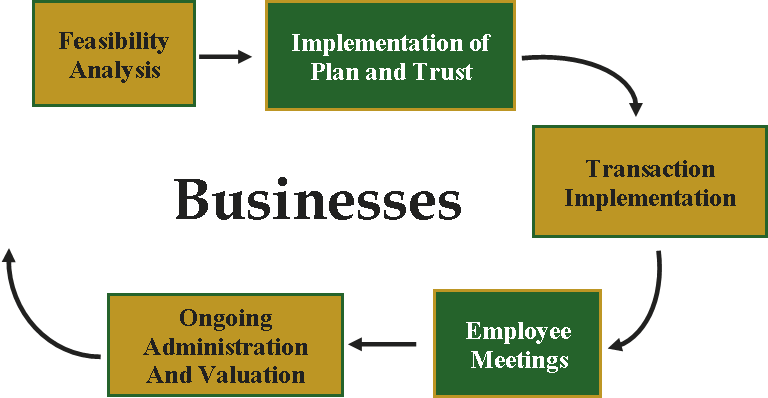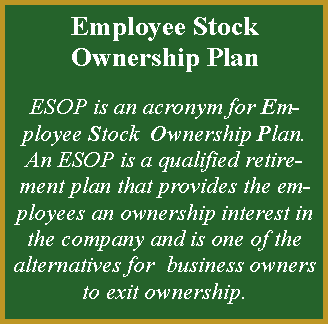Feasibility Analysis
During this phase of the engagement we determine what is the best structure for your company’s ESOP. Working together with our collaborative group of professional advisors we will:
During this phase, we conduct extensive management discussions, and extensive corporate finance and legal due diligence.
Implementation of the Plan & Trust
If the company decides to move forward, we, working together with our collaborative group of professionals, work to implement the ESOP Retirement Plan and Trust and provide the company with ongoing third party administrations of the ESOP. Working together with our collaborative group of professionals and based on the decisions made during the Structuring Meeting, we, together with our collaborative group of Professionals, draft and implement the Employee Stock Ownership Plan and Trust, Summary Plan Descriptions, Employee Beneficiary/Information Packages, and in the appropriate year file the Company’s Plan and Trust with the Internal Revenue Service to request a determination letter.
Transaction Implementation
During this phase of the process we prepare and review the transaction documents, including, but not limited to the (i) ESOP Purchase Agreement and related documents, and ESOP Term Loan Agreement and related documents; (ii) employment and non –compete agreements; (iii) executive compensation plan/agreements; (iv) preparing the appropriate board and shareholders resolutions; (v) counseling the company as issues arise; (vi) representing the ESOP at all meetings, including, but not limited to, the closing; (vii) reviewing the ESOP plan, trust, summary plan descriptions, and employee packages; (viii) reviewing and negotiating third party financing documents; and (ix) if necessary, preparing our legal opinion for the closing.
To accomplish the transaction, we recommend the ESOP consider using an independent trustee. We have a number of independent trustees that we have worked with in the past and can make the appropriate recommendation at the time when the company decides to move forward with the transaction.
Employee meetings
After the transaction is complete, we recommend that the company hold an “Employee Celebration.” At this celebration, the company will announce to the employees that they are now “Employee Owners” and discuss why the ESOP was implemented. We can assist the company with this meeting and be the lead facilitator. We also recommend certain members of our collaborative group of professionals to join us at this meeting.
Ongoing Administration and Valuation
It is important that the company works together with an experienced third party administration firm. We have a number of third party administrators that we have worked with in the past and will make the appropriate recommendation at the time when the company decides to move forward with the transaction. In addition to ongoing administration, a valuation will need to be accomplished annually. If the Trustee desires, we can recommend a qualified business appraiser from our collaborative group of professional advisors.




